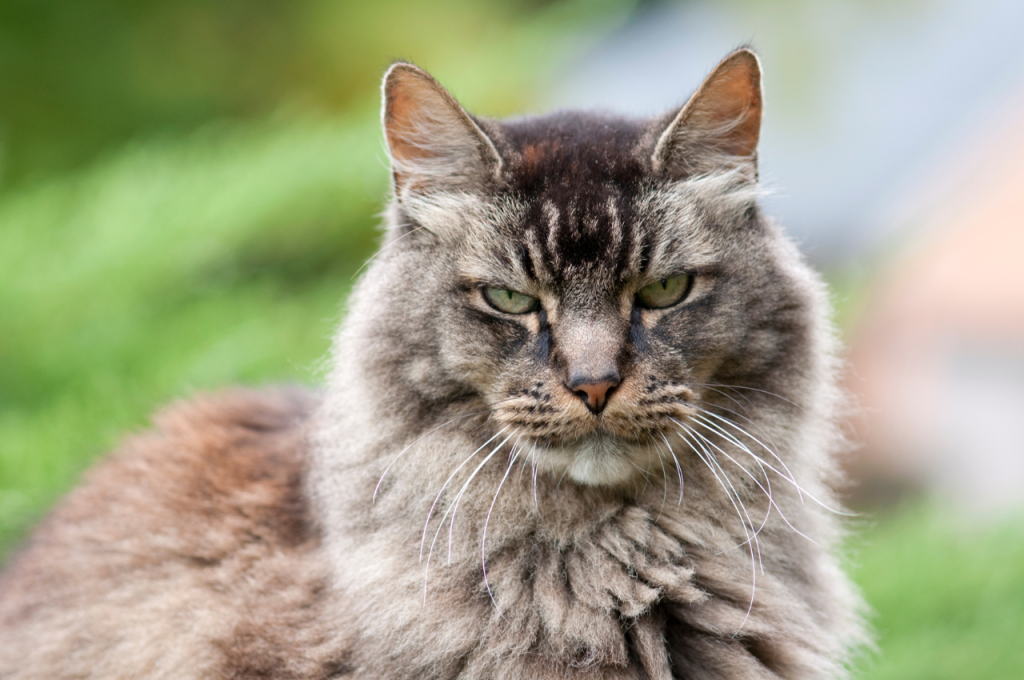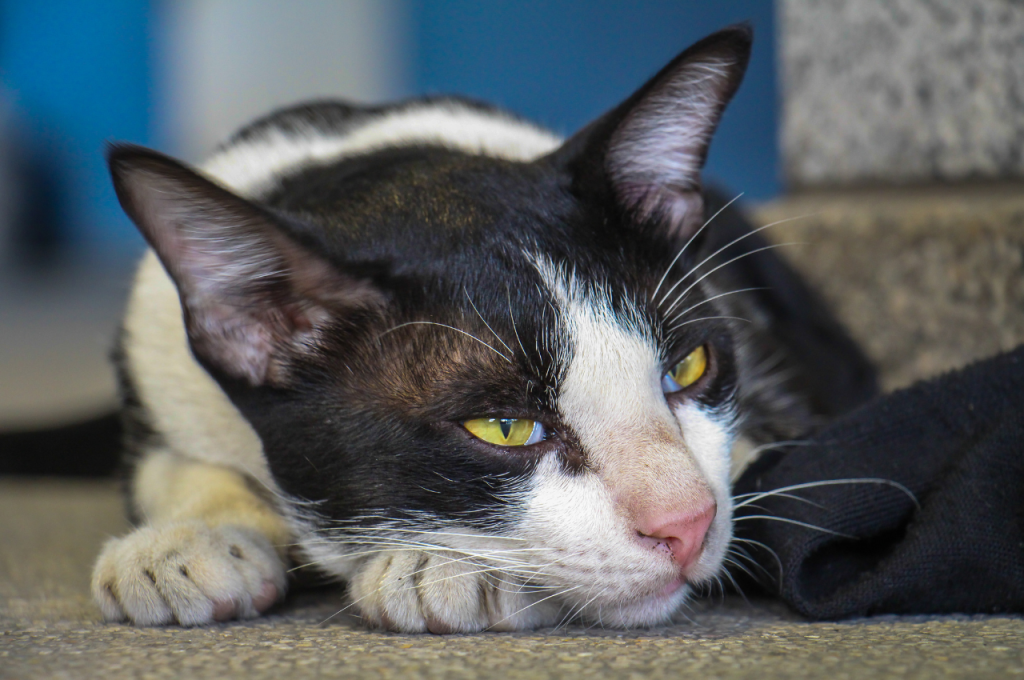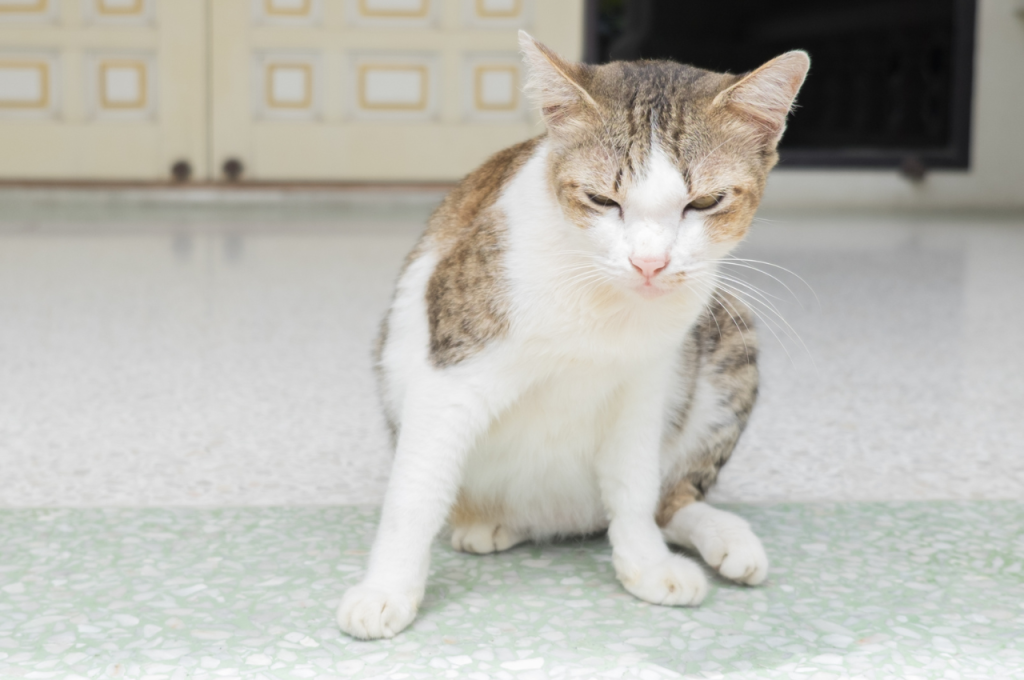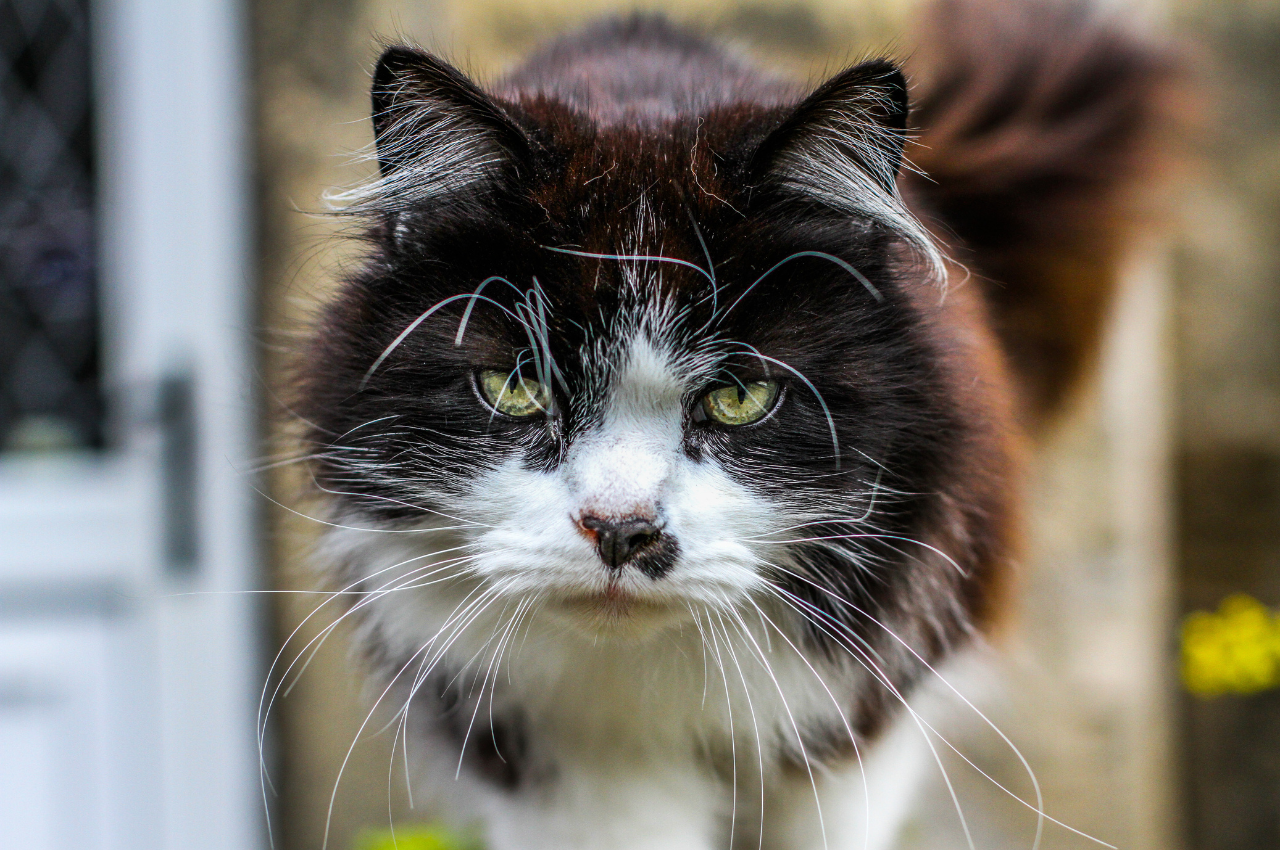To calm an annoying cat, try using gentle petting or offering a favorite treat to distract them. Creating a peaceful environment with soft music or dim lighting can also help soothe the cat’s nerves.
Additionally, providing a cozy hiding spot or a comfortable blanket may make the cat feel more secure and relaxed. Remember to approach the cat calmly and avoid sudden movements to prevent further agitation. By using these techniques, you can help your cat feel more at ease and reduce their annoying behavior.
Identifying The Signs Of Annoyance In Cats
Identifying signs of annoyance in cats can help prevent further irritation. Common signs include tail flicking, flattened ears, hissing, or low growls. A cat may also swat or nip gently as a warning. Dilated pupils, sudden body tension, and walking away are additional indicators that your cat may be feeling annoyed or overstimulated.

Physical Cues
Cats can exhibit various physical cues when they are annoyed. Puffed-up fur and flattened ears are common signs of annoyance. Dilated pupils and twitching tails can also indicate irritation. It’s essential to pay attention to these physical cues to understand your cat’s emotional state.
Behavioral Signals
Behavioral signals can also help in identifying an annoyed cat. Hissing, growling, or swatting are clear indicators of annoyance. Some cats may withdraw or hide when they are annoyed, while others might become more vocal and demand attention. Observing these behavioral signals can provide valuable insights into your cat’s mood.
Common Reasons Behind a Cat’s Annoyance
Understanding the reasons behind your cat’s annoyance can help you address the issue effectively and create a calm, harmonious environment for both you and your feline friend. Here are some common reasons behind a cat’s annoyance that you should consider:
Environmental Factors
Environmental factors such as loud noises, sudden changes in the household, or the presence of unfamiliar animals can trigger annoyance in your cat. Cats are sensitive to their surroundings, so creating a peaceful and predictable environment can help alleviate their stress.
Health Issues
Health issues like dental problems, arthritis, or digestive issues can lead to irritability in cats. It’s essential to ensure that your cat receives regular veterinary check-ups and has a healthy diet to prevent any underlying health issues that could contribute to their annoyance.
Immediate Soothing Techniques
Cats can sometimes become easily annoyed or agitated, and it’s important to know how to calm them down quickly. By using immediate soothing techniques, you can help your feline friend relax and feel more at ease. Here are some effective methods to calm an annoying cat:
Gentle Petting
Gentle petting is a simple yet powerful way to calm an annoying cat. Start by slowly approaching your cat and extending your hand towards them. Use soft, slow strokes along their back, avoiding any sudden movements that may startle them. Be sure to pay attention to your cat’s body language to ensure they are comfortable with the interaction.
Finding A Quiet Space
Finding a quiet space for your cat can provide a peaceful environment that promotes relaxation. Look for a secluded area in your home where your cat can retreat when they are feeling overwhelmed or irritated. This space should be free from loud noises, distractions, or other pets that may bother them. Consider creating a cozy corner with a comfortable bed or blanket where your cat can feel safe and secure.
Remember, every cat is unique, so it’s important to observe and understand your cat’s individual preferences and needs. By using these immediate soothing techniques, you can help calm your annoying cat and create a more harmonious environment for both you and your feline companion.
Long-term Strategies for a Peaceful Coexistence
Cats, like humans, can have their moments of annoyance. Understanding how to calm an annoying cat can lead to a peaceful coexistence between you and your feline friend. Long-term strategies play a crucial role in achieving this harmony.

Routine Establishment
Establishing a consistent routine is essential for calming an annoying cat. Cats thrive on predictability, so feeding, playtime, and grooming should occur at the same times each day. This helps reduce stress and anxiety, leading to a more peaceful coexistence with your cat.
Proper Socialization
Proper socialization is key to calming an annoying cat. Introducing your cat to various people, animals, and environments from a young age can help prevent fear and aggression. This exposure can create a more relaxed and well-adjusted cat, fostering a peaceful coexistence in your home.
The Role Of Play In Reducing Annoyance
Cats can sometimes exhibit annoying behaviors, but one effective way to calm them down is through play. Engaging your feline friend in interactive activities can help channel their energy and reduce irritability.
Interactive Toys
Introducing interactive toys like laser pointers, feather wands, and treat dispensers can keep your cat entertained and mentally stimulated. These toys mimic hunting instincts, providing a healthy outlet for their energy.
Scheduled Playtime
Setting aside dedicated playtime ensures your cat receives regular mental and physical stimulation, reducing the likelihood of them acting out. Consistent play sessions help establish a routine and strengthen your bond with your pet.
Nutritional Influences On Behavior
Nutrition can play a significant role in feline behavior. To calm an annoying cat, it is crucial to provide a balanced diet that contains essential nutrients such as protein, carbohydrates, and fatty acids. Additionally, avoid feeding your cat foods that contain high levels of artificial preservatives, additives, and fillers, which can lead to hyperactivity and other behavioral issues.
Nutritional Influences on Behavior Cats are moody creatures, and their behavior is often influenced by their diet. Nutritional deficiencies, imbalances, and food allergies can cause stress and anxiety in cats, leading to undesirable behavior such as scratching, biting, and meowing excessively. Therefore, it is essential to pay attention to your cat’s diet and make necessary adjustments to calm your annoying cat. Diet adjustments Cats are obligate carnivores, and their diet should primarily consist of animal-based protein. Feeding your cat a high-quality, balanced diet can help improve their overall health and behavior. You can consider switching to a wet food diet, which contains more moisture and fewer carbohydrates than dry food.
Additionally, you should avoid feeding your cat table scraps and human food, which can upset their stomach and cause behavioral issues. Treats as rewards Treats can be a great tool to calm an annoying cat. You can use treats as rewards for good behavior, such as using the litter box or not scratching the furniture. However, you should be careful not to overfeed your cat with treats as it can lead to obesity and other health problems. Choose high-quality, low-calorie treats that are specifically designed for cats.
In conclusion, a cat’s behavior can be influenced by their diet, and making necessary adjustments can help calm your annoying cat. By feeding your cat a balanced diet and using treats as rewards, you can improve their overall health and behavior. Remember to consult with your veterinarian before making any significant changes to your cat’s diet.
Creating a Stress-free Environment at Home
To create a stress-free environment at home and calm an annoying cat, ensure they have a quiet space, offer interactive toys, and establish a routine. Providing scratching posts and hiding spots can also help alleviate your cat’s anxiety. Consistent positive reinforcement and patience are key in soothing a distressed feline.

Safe Spaces
Provide quiet corners for your cat to retreat to.
Minimizing Loud Noises
- Keep the environment calm and quiet.
- Offer soft music or white noise.
- Avoid sudden loud sounds.
- Use soundproofing materials if needed.
- Ensure your cat has a safe and relaxing space to unwind.
Conclusion
Cats can be frustrating when they display annoying behavior. However, by understanding the reasons behind their behavior and implementing the right techniques, you can successfully calm your cat. It’s important to remember that each cat is unique, and what works for one cat might not work for another.
By being patient and consistent, you can help your cat feel more relaxed and content. So, the next time your cat is acting up, try out some of the techniques mentioned and see if they work for you.
